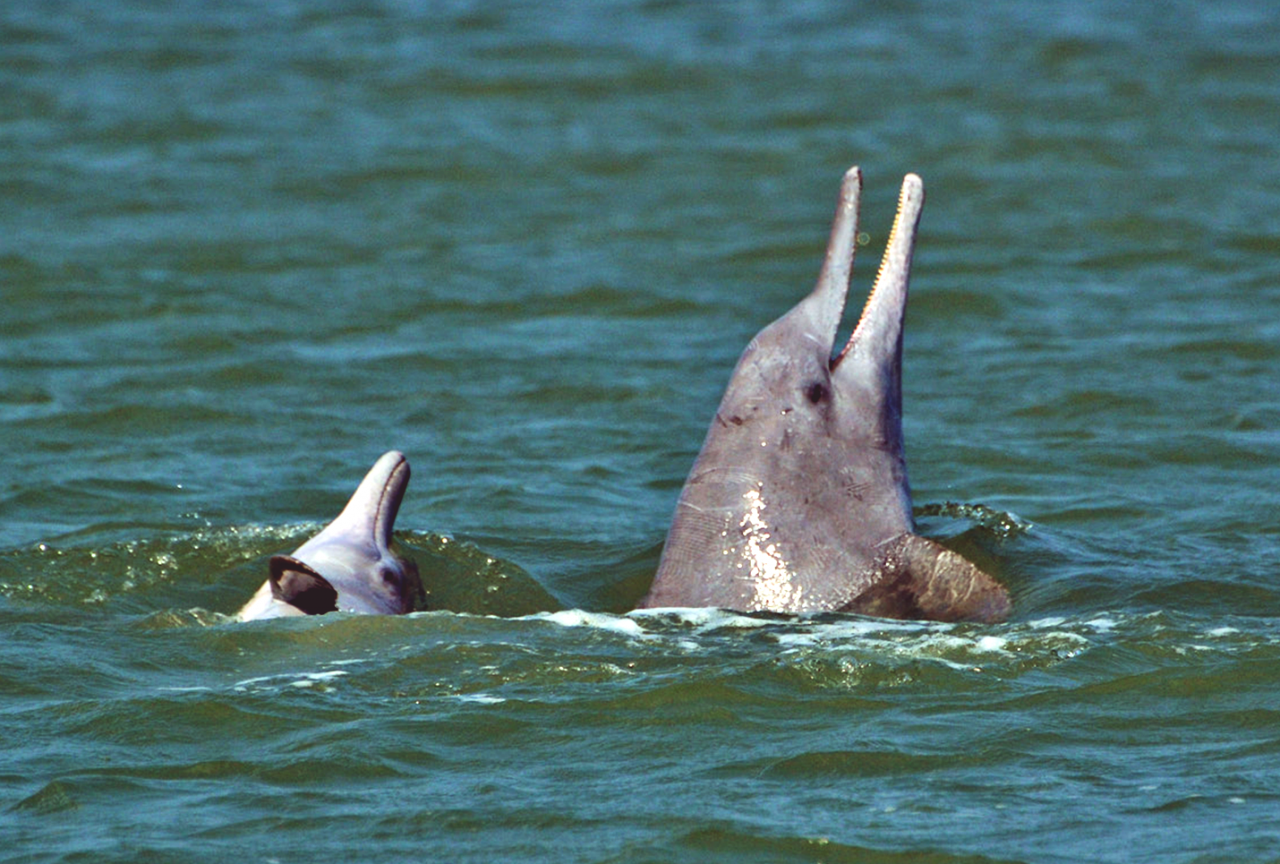Tale of Two Species
I’m visiting the Cornell Bioacoustics Research Program (BRP) to learn more about all things acoustics that applies to marine mammal research. Before diving too deep, let me first start by telling you about the kind of work I do back home in India!
My research involves studying marine mammals in Indian waters – a beautiful stretch of coastal land in Sindhudurg with old forts and a laid-back fishing community. For my current work, I am studying the acoustic behavior of Indian Ocean humpback dolphins, which are very common along the west coast of India. These particular humpback dolphins were only recently recognized as a separate species and we know little about the acoustic ecology and behavior of these animals.
Because of this lack of knowledge, one of our first tasks, before delving deep into their communication and social behavior, was to describe their acoustic repertoire. I spent many days on our small wooden ‘research vessel’ out on the water listening to these dolphins, along with other marine life (snapping shrimp and the occasional fish) and a copious amount of boat noise! After I had collected all those recordings, I visited BRP where I spent an entire month analyzing the recordings for dolphin whistles and a few good months writing up all the results. A big thanks to Holger for making sure I got that done on time!
Next up on my to-do list is to understand what these whistles mean in different behavioral contexts.
While working on the dolphin whistles, I was e-introduced to Luciana Andrade, a marine biologist and dolphin researcher from Brazil. We are sharing an office while I am working here at BRP. It is very exciting to have our corner office “pod” to talk about sounds and dolphins in general.
[vimeo id=”240043614″ size=”medium”]Guiana dolphin vocalizations. Recorded by Luciana Guimarães de Andrade.[/vimeo]
Over the past two months, I learned a lot about Guiana dolphins, a species Luciana studied during the course of her graduate work. During her Ph.D., Luciana recorded these dolphins in Guanabara Bay, an extremely busy coastal habitat in Rio de Janeiro State, Brazil. She studied the Guiana dolphin whistles produced during different behavioral states and described another vocalization type (burst pulses) of this species in her research.
Recently, Luciana’s colleagues from Aquatic Mammals and Bioindicators Lab (MAQUA) at Rio de Janeiro State University have been using aerial drones to monitor dolphin groups and better understand their behaviors. This is a new and powerful tool that can be used in combination with passive-acoustic monitoring to aid the conservation of dolphin species. Check out this video of Guiana dolphin behavior near Rio de Janeiro that researchers from MAQUA shared with us!
We shared quite a few stories of our time (long, long sunny hours) out on the sea, searching for dolphin pods, recording their sounds, writing about their behavior, and taking pictures of fins for photo identification of individual animals. Through our conversations, we realized that there are a lot of parallels between the two species we study. Increasing human impacts on the animals and their habitats is one of them. Both of these species are found in coastal waters, bays, and estuaries that are heavily utilized by humans. These dolphins are increasingly exposed to noise, chemical pollution, and fishing pressure. It is therefore not surprising that mortality by entanglement in fishing gear and vessel strikes are serious threats to coastal marine mammal populations globally.
Over the years, a topic that has both concerned as well as interested me is how noise pollution from the growing number of ships and boats in my study area affects the way dolphins communicate. Most dolphin species use acoustic communication for coordinating important behavioral activities such as navigation and foraging within their groups. Being exposed to noisier acoustic environments can change their social and reproductive behavior, which might negatively impact these animals on a population level.
With anthropogenic pressures on coastal habitats rising, it is important that we learn more about the behavior and ecology of animals inhabiting them. Understanding the acoustic behavior of coastal dolphins may offer us a window to their elusive life that could eventually help us to minimize human impacts on these species and to better preserve and protect their habitats.
Until then, we keep listening…


